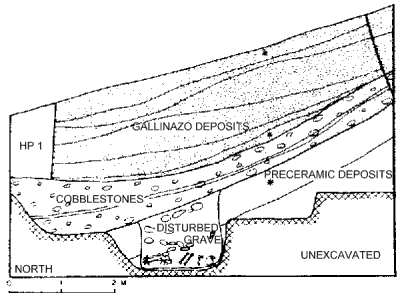 |
Science Frontiers ONLINE No. 53: Sep-Oct 1987 |
|
|
A Tsunami And A Peruvian Cultural Glitch
We quote from the abstract of a paper by R.M. Bird from American Antiquity.
"While investigating the archaeological background of early maize on the coast of Peru, I realized that several factors affect interpretation. The estimated date for the start of common use of maize there is close to the apparent dates of a large tsunami, the abandonment of many coastal sites, and the start of occupation at Chavin de Huantar in the highlands. While investigating the possible relations between the principal pretsunami coastal culture and Chavin, I discovered that depictions of a monstrous head link the two cultures."
The "monstrous head" is thought by the Bird to be a stylized representation of a tsunami wave. Not mentioned at all in the abstract are the physical evidences of tsunami damage along the Peruvian coast. This article portrays the possible effects on the ancient manmade structures in the region as well as the widespread deposits of sand, cobblestones, and other sediments.
(Bird, Robert McK.; "A Postulated Tsunami and Its Effects on Cultural Development in the Peruvian Early Horizon," American Antiquity, 52:285, 1987.)
 | Profile of a north-south site trench at a a site on the Peruvian coast, showing thick strata that may have been deposited by a tsunami. |